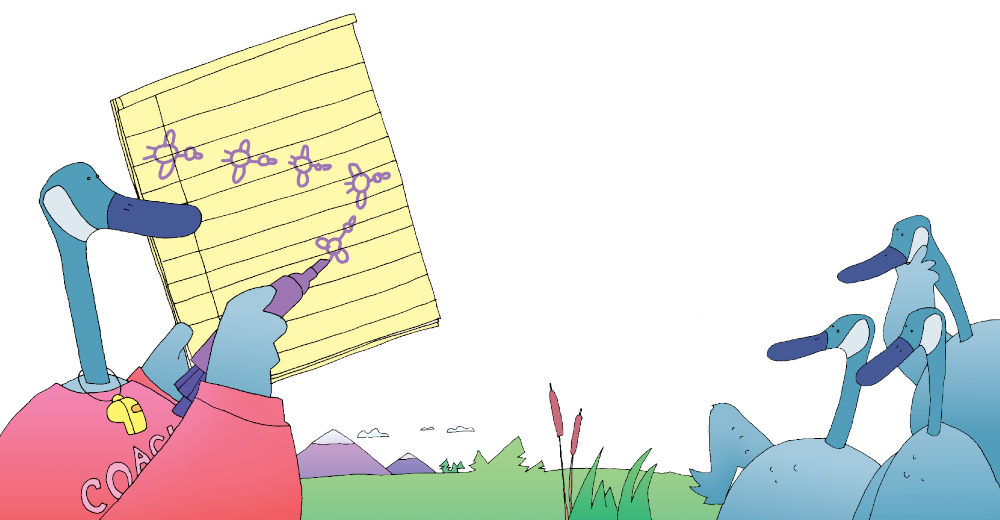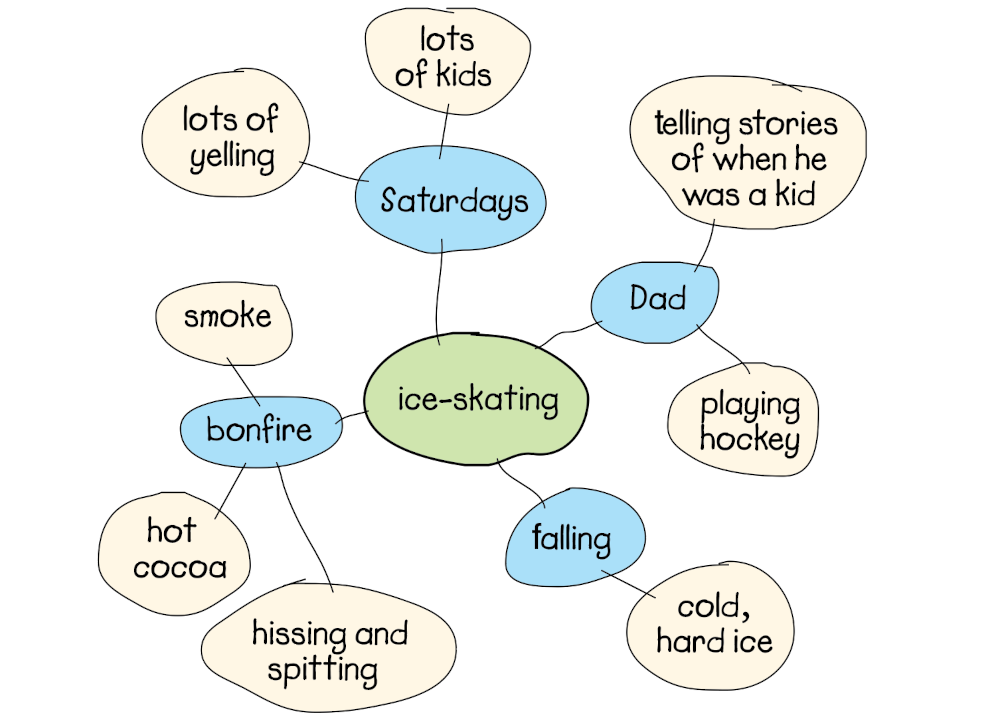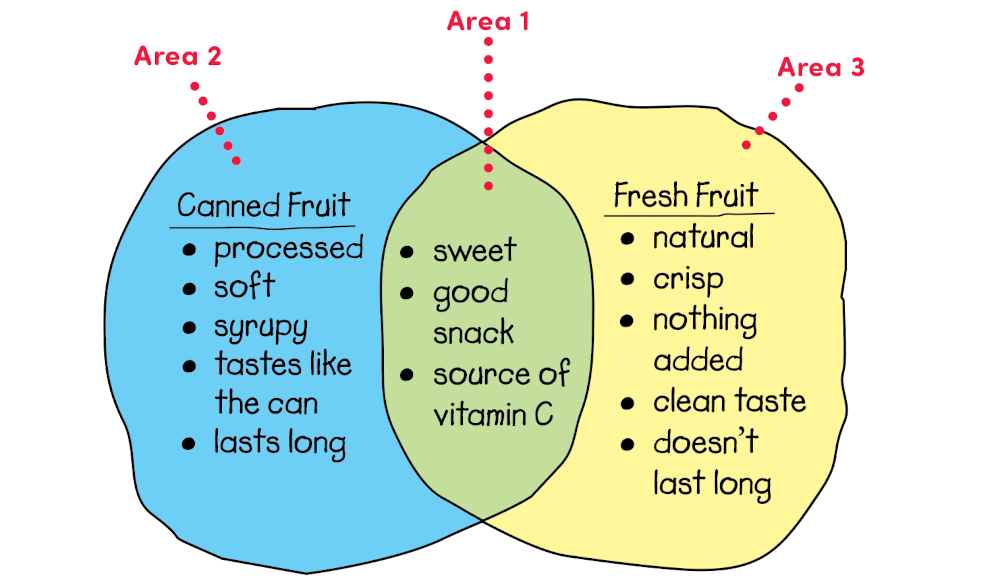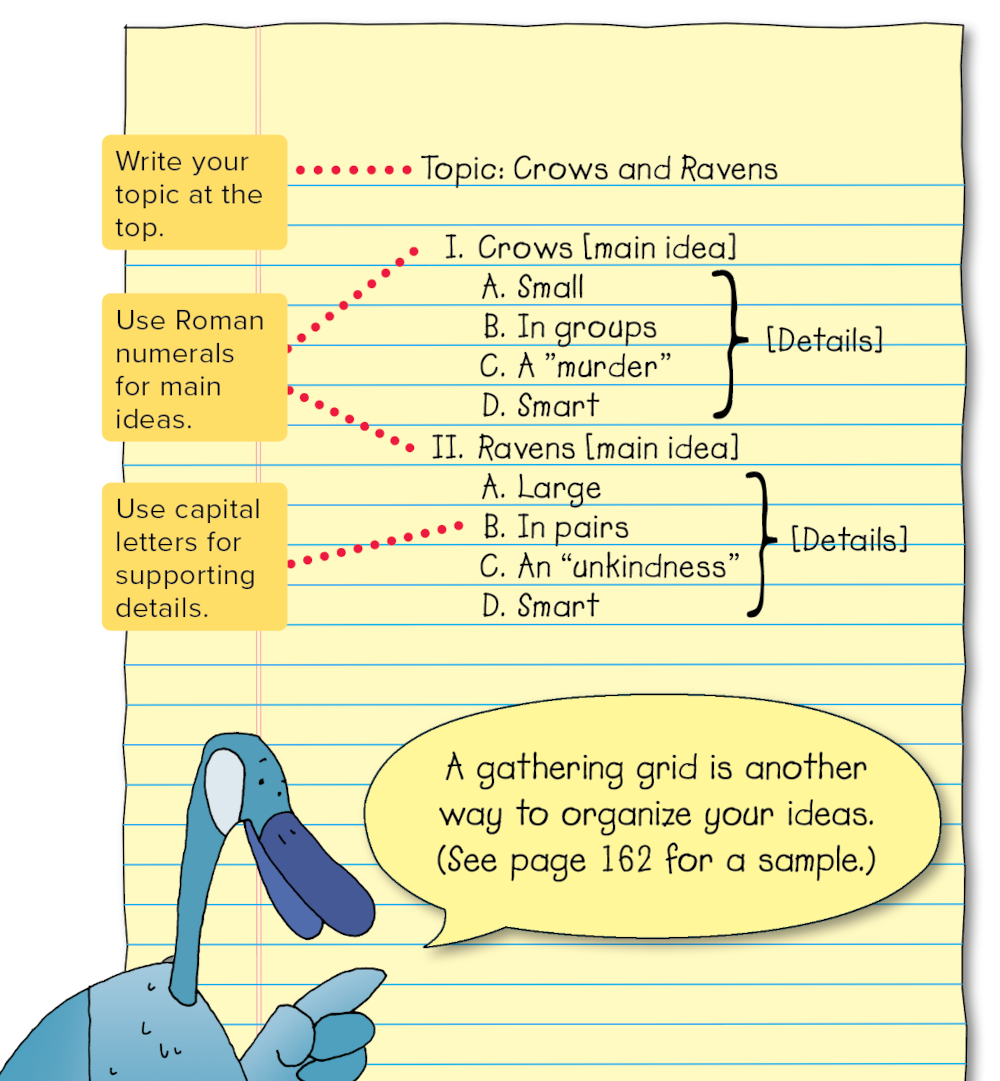WT 287
Page 287
Using Graphic Organizers
To get organized, you need to “get your ducks in a row.” That’s tough. Ducks are stragglers. Now imagine trying to get your geese in a V! That’s a job for a diagram or some other kind of graphic organizer.
Using Graphic Organizers
Every problem has a graphic organizer. Do you need to gather ideas to write a story? Try a cluster. Do you need to compare two things? Use a Venn diagram. How about organizing facts for an essay? Try an outline.
Clusters, diagrams, outlines, and other graphic organizers can help you get your ducks in a row or your geese in a V.

WT 288
Page 288
1. Clustering Ideas
When details come one after another, a list works well. But when details bunch up around the topic, a cluster works better. It can help you describe a topic, name categories, or explain ideas.
Begin clustering by writing the topic in the middle of the page. Then list related words around it. Circle and connect your words.

Tip
Clustering can help you organize facts for a story, a report, a speech, or another project.
WT 289
Page 289
2. Describing a Topic
How can you collect details to describe someone or something? Use a describing wheel. Write your topic in the middle of your wheel. Around it, list words about the topic.

3. Answering the 5 W’s
Use a 5 W’s star to answer questions about an event: who, what, when, where, and why?

WT 290
Page 290
4. Comparing Two Topics
How can you compare two related topics? Use a Venn diagram. This type of diagram shows how two things are alike, and how they are different.
Area 1
List details that are the same for both topics.
Area 2
List details that are different for one topic.
Area 3
List details that are different for the other topic.

Tip
To compare two topics, use the details in Area 1. To contrast the two topics, use the details in Areas 2 and 3. (You can create your own Venn diagram.)
WT 291
Page 291
5. Outlining Your Ideas
When ideas come one after another, use an outline. It can help you organize an essay or a report, showing main ideas and details.
